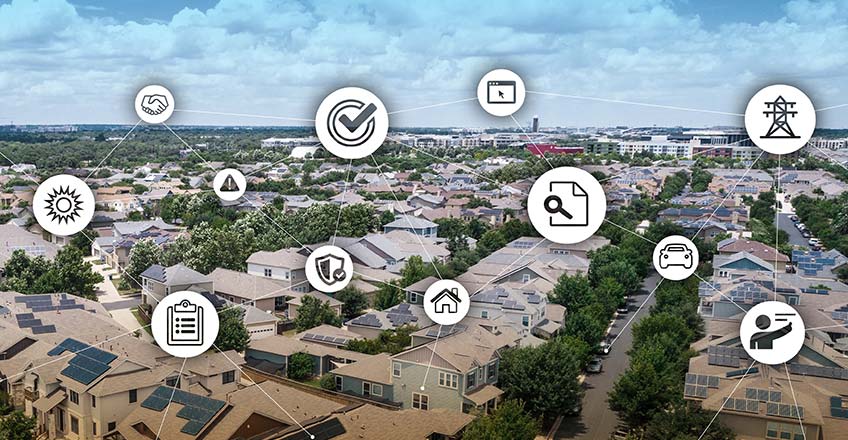Learn About the Revised IEEE Standard 1547-2018 on NREL's New Website

The National Renewable Energy Laboratory (NREL) has launched a new website featuring information on the Institute of Electrical and Electronics Engineers (IEEE) Standard 1547-2018 for integrating distributed energy resources (DERs) into the modernized electrical grid. The revised standard contains detailed, updated technical specifications and configurations to help grid operators and other stakeholders operate DERs within the local power infrastructure.
The IEEE 1547-2018 Resources website provides a wealth of educational materials about the standard, including easy-to-scan summaries of technical reports, white papers, webinars, and other presentations. These resources are for utilities, states, solar developers, transmission operators, regulators, policymakers, and others involved with DERs. The materials focus on multiple aspects of improving performance of the electric grid during normal daily operations as well as grid resilience to abnormal events.
“The website showcases freely available educational materials to supplement other resources on the standard,” said David Narang, NREL co-principal investigator of the project and chairman of the IEEE 1547-2018 Revision Working Group. “It also represents a collaborative effort between NREL, the U.S. Department of Energy Solar Energy Technologies Office, IEEE, and other industry partners to improve the understanding and application of the standard.”
By cultivating what Narang, co-principal investigator Michael Ingram, and project partners have identified as the most relevant materials for understanding new requirements of the standard, the team hopes to help fill the knowledge gaps on how to achieve modern grid systems—ultimately, to help accelerate the transition to a cleaner, more secure, and more efficient energy future.
The website also invites users to participate in a request for information to identify stakeholders’ needs. That feedback will help identify key priority areas that additional educational material should address. NREL will aggregate, anonymize, and post the results to the website, along with new education resources.
“Looking forward, we see this as a central hub for information on adopting the revised standard—from a technical, regulatory, planning, and general knowledge standpoint,” Ingram added, stressing the importance of collaboration among the stakeholder community. “We plan to continue highlighting new materials as they become available and encourage all feedback, questions, and ideas for other resources.”
Learn more about NREL’s research on standards and codes for the interconnection of modern energy systems.
Last Updated May 28, 2025
